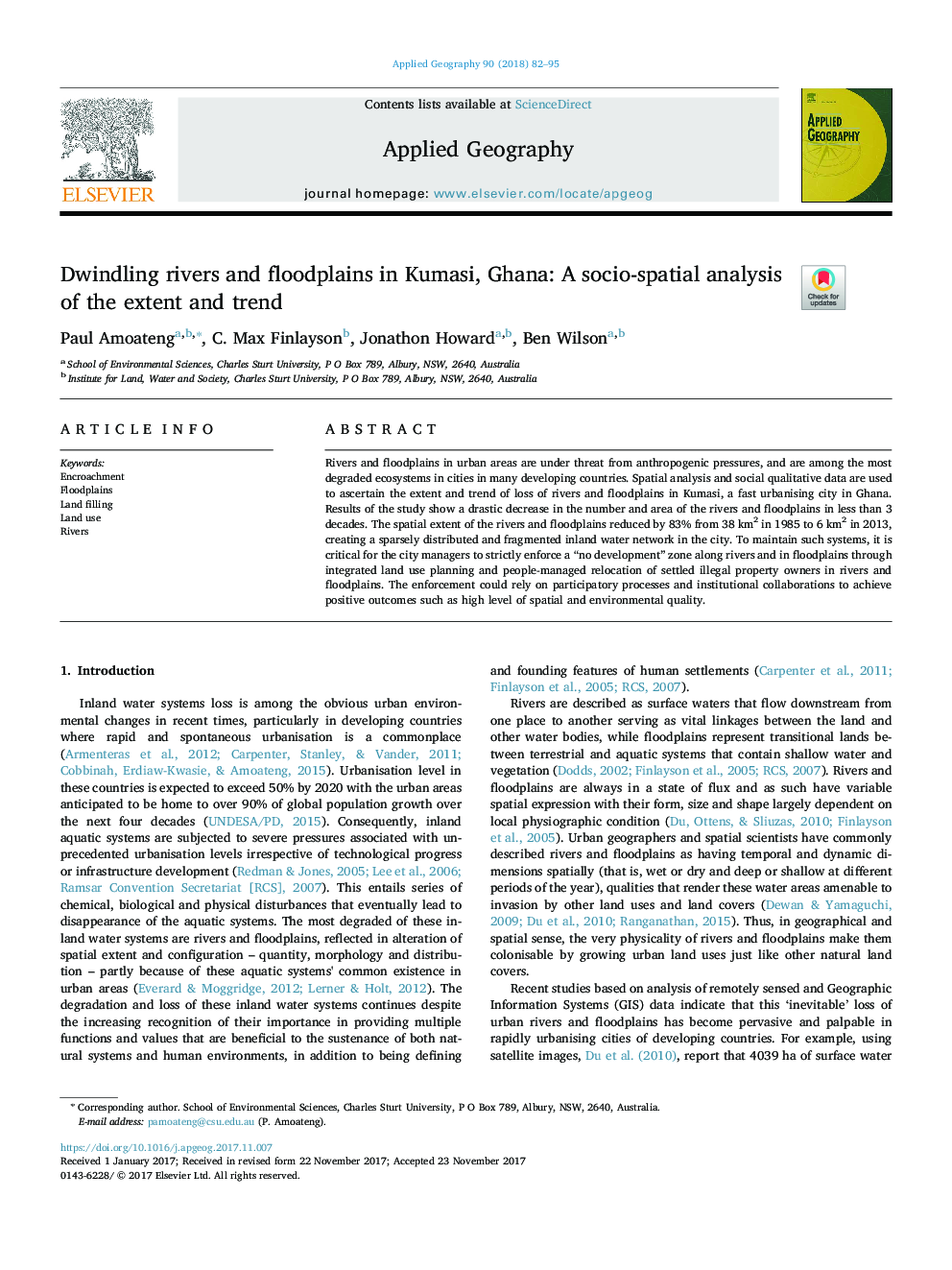| Article ID | Journal | Published Year | Pages | File Type |
|---|---|---|---|---|
| 6538361 | Applied Geography | 2018 | 14 Pages |
Abstract
Rivers and floodplains in urban areas are under threat from anthropogenic pressures, and are among the most degraded ecosystems in cities in many developing countries. Spatial analysis and social qualitative data are used to ascertain the extent and trend of loss of rivers and floodplains in Kumasi, a fast urbanising city in Ghana. Results of the study show a drastic decrease in the number and area of the rivers and floodplains in less than 3 decades. The spatial extent of the rivers and floodplains reduced by 83% from 38Â km2 in 1985 to 6Â km2 in 2013, creating a sparsely distributed and fragmented inland water network in the city. To maintain such systems, it is critical for the city managers to strictly enforce a “no development” zone along rivers and in floodplains through integrated land use planning and people-managed relocation of settled illegal property owners in rivers and floodplains. The enforcement could rely on participatory processes and institutional collaborations to achieve positive outcomes such as high level of spatial and environmental quality.
Related Topics
Life Sciences
Agricultural and Biological Sciences
Forestry
Authors
Paul Amoateng, C. Max Finlayson, Jonathon Howard, Ben Wilson,
